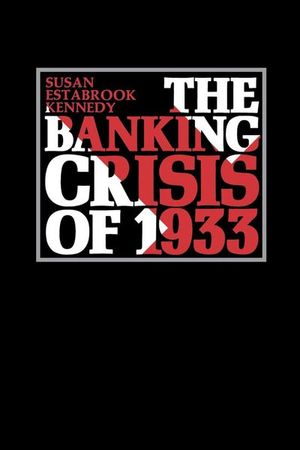The Banking Crisis of 1933
Published by The University Press of Kentucky
A “well-written, carefully researched study” of this dramatic episode in American financial history, when the banking industry verged on complete collapse (Business History Review).
On March 6, 1933, Franklin D. Roosevelt, less than forty-eight hours after becoming president, ordered the suspension of all banking facilities in the United States. How the nation had reached such a desperate situation and how it responded to the banking “holiday” are examined in this book, the first full-length study of the crisis.
Although the 1920s had witnessed a wave of bank failures, the situation worsened after the 1929 stock market crash, and by the winter of 1932-1933, complete banking collapse threatened much of the nation. President Hoover’s stopgap measures proved totally inadequate, the author shows, and by March 4, the day of Roosevelt’s inauguration, thirty-four states had declared banking moratoriums. Of special interest in this study is the author’s examination of relations between Herbert Hoover and Franklin D. Roosevelt. Upon the book’s publication, Reviews in American History described The Banking Crisis of 1933 as “by far the best and most comprehensive [study] that has appeared,” and praised its “clear and readable style.”
On March 6, 1933, Franklin D. Roosevelt, less than forty-eight hours after becoming president, ordered the suspension of all banking facilities in the United States. How the nation had reached such a desperate situation and how it responded to the banking “holiday” are examined in this book, the first full-length study of the crisis.
Although the 1920s had witnessed a wave of bank failures, the situation worsened after the 1929 stock market crash, and by the winter of 1932-1933, complete banking collapse threatened much of the nation. President Hoover’s stopgap measures proved totally inadequate, the author shows, and by March 4, the day of Roosevelt’s inauguration, thirty-four states had declared banking moratoriums. Of special interest in this study is the author’s examination of relations between Herbert Hoover and Franklin D. Roosevelt. Upon the book’s publication, Reviews in American History described The Banking Crisis of 1933 as “by far the best and most comprehensive [study] that has appeared,” and praised its “clear and readable style.”
BUY NOW FROM
COMMUNITY REVIEWS
